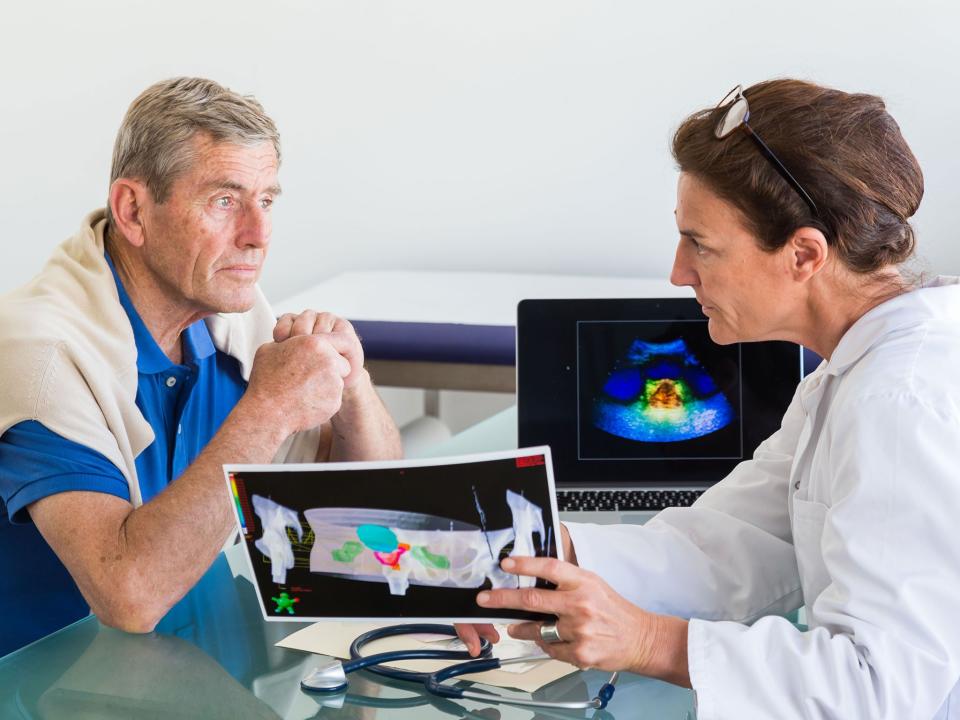NHS ‘doesn’t have enough scanners’ to roll out new hi-tech method of detecting prostate cancer

A more accurate, faster and cheaper method of detecting prostate cancer should be rolled out across the whole NHS, an expert body is advising.
The National Institute for Health and Care Excellence (NICE) has recommended MRI diagnosis as a first-choice option for diagnosing low-risk cases and monitoring men having treatment – ending a “postcode lottery”.
The scanning technique, which is already used in hospitals for about half of men with suspected prostate cancer, helps to identify potentially cancerous lesions and prevent unnecessary biopsies that can prove misleading and "unpleasant".
However, doubts were immediately raised over whether the NHS has enough MRI machines and radiologists to cater for the roll-out.
In the UK about 130 men each day are told they have prostate cancer, and in 2016 alone, 11,631 died of it.
In new draft guidance, NICE, the NHS body that makes treatment decisions based on cost effectiveness, recommends multiparametric MRI (mpMRI) scanning as a first-line investigation for suspected “clinically localised” cases.
An mpMRI scan provides more detailed pictures of a prostate than a standard MRI version, which helps specialists decide whether a biopsy is needed.
But the Royal College of Radiologists said nearly 90 per cent of magnetic resonance scanners were over five years old, which meant they were less likely to be mpMRI-capable, and 30 per cent were over 10 years old and would be highly unlikely to be suitable.
The UK is already short of at least 1,000 diagnostic radiologists to properly cover the number of patient scans, the college said.
Dr Philip Haslam, of the college, said they supported NICE’s recommendation. “However, our ability to provide mpMRI for patients is hampered by a shortage of modern equipment and a crisis in radiologist staffing. We need more expert imaging doctors able to interpret these highly specific types of MRI scan.
“Demand for prostate mpMRI is rightly growing. Anecdotally we’ve heard of hospitals seeing demand for these scans tripling in a matter of months, but we also know there is wide geographical variation in availability.
“We are doing what we can to provide training in the technique, but to sustainably roll it out in every UK hospital in future we need government funding for more new radiologists and the MRI scanners capable of doing these types of scan.”
With traditional biopsies, a needle has to be inserted almost at random so may miss cancer cells or provide a false positive, but with the more accurate high-tech scans harmful cells are detected earlier, reducing the need for more complex treatment at a later stage.
And for those with low-risk cancer, the new technology can also prevent unnecessary biopsies, which can be unpleasant and carry a risk of infection.
Some men are advised to have active surveillance of the prostate to monitor the cancer if a biopsy is not deemed necessary, and they will also have the option of the mpMRI, NICE said.
The decision should also save money by reducing the number of biopsies done and the time taken for diagnosis, and save on operating room capacity.
NICE puts the cost of an mpMRI scan at £412 for each patient.
Charity Prostate Cancer UK called for health chiefs to ensure there is the increased scanner capacity, training and workforce to cope with the new strategy.
There should be no further delay in making sure all men can benefit
Prostate Cancer UK
Heather Blake, of Prostate Cancer UK, said: “Earlier this year we found that only 50 per cent of men with suspected prostate cancer across the UK were being offered mpMRI before biopsy to the highest evidence-based standards.
“Now that NICE has endorsed this breakthrough diagnostic technique as being both clinically and cost-effective there should be no further delay in making sure all men can benefit from the increased accuracy of diagnosis it can provide.”
She said it should give more men confidence to avoid or delay more radical treatments and their potential side effects.
“We want to see the new recommendations taken up by commissioners and clinicians in all parts of the country. It’s also vital that all UK cancer strategies ensure there is the increased scanner capacity, training and workforce required to enable all men to benefit from this guidance now and in the future,” she said
Currently men who have suspected prostate cancer typically undergo a biopsy that requires a doctor to pass an ultrasound probe into the back passage and take cells from the prostate that might contain cancer. But it can miss harmful cancers and diagnose harmless cancers that don’t need identifying, experts say.
Paul Chrisp, director for the NICE Centre for Guidelines said the decision should improve survival rates, and benefit both patients and the NHS in the long term.
Professor Mark Emberton, University College London’s dean of medical sciences, who oversaw trials of the new technology, said: “This recommendation by NICE is fantastic news and means all men at risk of prostate cancer will now have an MRI scan before any biopsy – bringing to an end to the postcode lottery that currently exists in the UK in terms of MRI provision.”

 Yahoo News
Yahoo News 